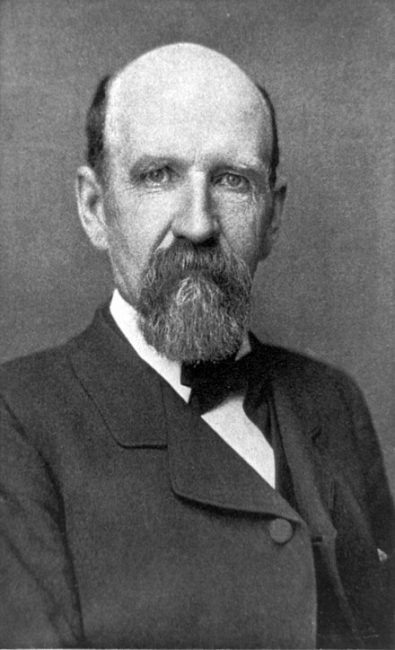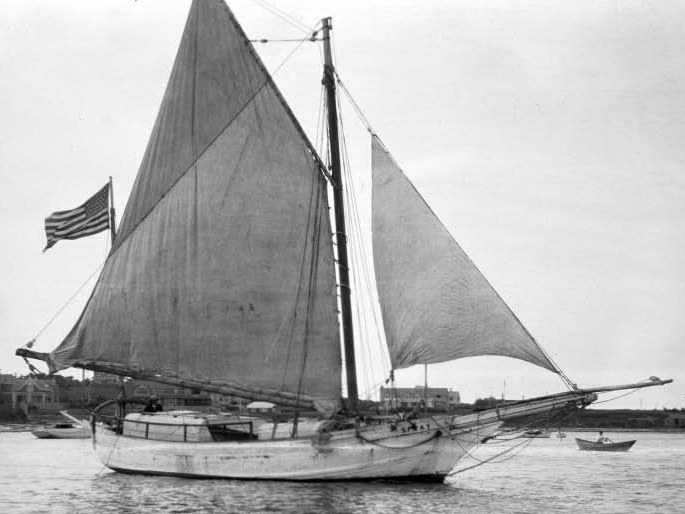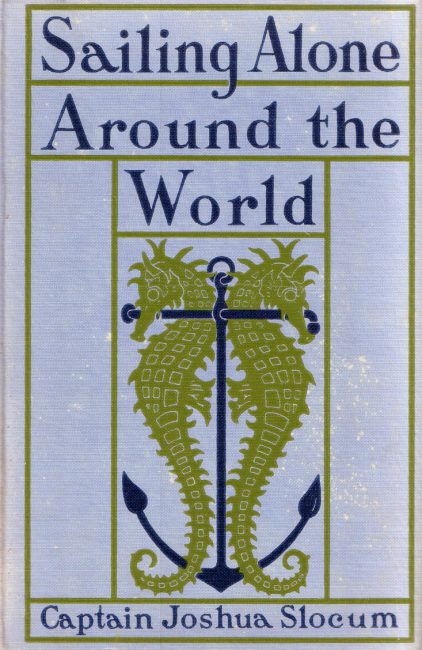
Joshua Slocum (1844-1909)
On June 27, 1898, the first solo circumnavigation of the globe is completed by Joshua Slocum from Brier Island, Nova Scotia. After more than three years, Slocum returned in his gaff rigged sloop oyster boat named Spray having circumnavigated the world, a distance of more than 74,000 km. The event was almost unnoticed because the Spanish–American War, which had begun two months earlier, dominated all the headlines.
Joshua Slocum – Youth and Education
Joshua Slocum grew up in Mount Hanley, Annapolis County, Nova Scotia. It is assumed that his early adventures on the water were accomplished on coastal schooners operating out of the small ports such as Port George and Cottage Cove near Mount Hanley along the Bay of Fundy. It has been reported that as a young boy, Slocum made several attempts to run away from home and finally succeeding at the age of 14. He hired on as a cabin boy and cook on a small schooner and later he signed on at Halifax as ordinary seamen on a merchant ship bound for Dublin, Ireland and eventually became an ordinary seaman on a British merchant ship bound for China. Slocum studied for the Board of Trade examination and became Second Mate and later Chief Mate.

Photo of Spray, en:Joshua Slocum ‘s sailing boat, taken in 1898.
Slocim’s Ships
Joshua Slocum‘s first blue-water command was the barque Washington which he took across the Pacific in 1869 and was the master of eight vessels in the following 20 years. Slocum‘s first ship he owned by himself was the Pato, which he used to deliver cargo. In Fairhaven, Massachusetts, Slocum rebuilt a 11.2 m gaff rigged sloop oyster boat named Spray and set sail at Sambro Island Lighthouse near Halifax, Nova Scotia on July 3, 1895 to navigate around the globe without using a chronometer. It is believed that during his journey, Slocum normally sailed the Spray without touching the helm. The Spray was capable of self-steering because of its long keel and the length of the sail plan. He balanced the ship stably on any course relative to the wind by adjusting or reefing the sails and by lashing the helm fast. It is believed that the adventurer sailed about 2000 miles across the Pacific Ocean without touching the helm.
Circumnavigation of the World
On April 24, 1895, Slocum set out on his journey from his home port of Boston, Massachusetts. In the ports of the American East Coast he first completed his equipment and sailed from Yarmouth into the Atlantic Ocean in May 1895, as he first planned to circumnavigate the world in an easterly direction through the Suez Canal. Via Horta on the Azores island of Fayal he reached Gibraltar on August 4. There he was convinced that the southern Mediterranean Sea was too dangerous for a one-handed sailor because of the piracy still prevailing there, and he decided to circumnavigate the southern hemisphere in a westerly direction. From Gibraltar, he set off in a south-westerly direction, sailed past the Canary Island of Fuerteventura and the Cape Verde Islands, crossed the equator and reached Pernambuco in Brazil on 5 October. After further stopovers in Rio de Janeiro, Montevideo and Buenos Aires, he sailed to Punta Arenas in the dreaded Strait of Magellan and reached the Pacific Ocean at Cape Pilar on 3 March 1896. There he was driven back by the storm and could only leave the coast forty days later on 13 April.
The Journey
Via Robinson Island and Samoa, Slocum reached Newcastle in Australia on 1 October 1896. He stayed for more than half a year, visiting Sydney, Melbourne and Tasmania and did not continue his journey until 16 April 1897. He followed the east coast of Australia on the Great Barrier Reef, sailed through the Torres Strait, crossed the southern Indian Ocean via Christmas Island, the Cocos Islands, Rodrigues and Mauritius and reached Port Natal in South Africa on 17 November 1897. He circumnavigated the Cape of Good Hope and after a stay in Cape Town he set off again on 26 March 1898 to cross the Atlantic Ocean in a north-western direction. His course took him via St. Helena and Ascension, past Trinidad, via Grenada and Dominica to Antigua, which he reached on 1 June 1898. The last leg led him directly to Newport (Rhode Island), where he arrived on 27 June 1898, having circumnavigated the world, a distance of more than 46,000 miles. Unfortunately for him, Slocum’s return went almost unnoticed. The Spanish–American War, which had begun two months earlier, dominated the headlines. After the end of major hostilities, many American newspapers published articles describing Slocum’s amazing journey.
“I had resolved on a voyage around the world, and as the wind on the morning of April 24, 1895 was fair, at noon I weighed anchor, set sail, and filled away from Boston, where the Spray had been moored snugly all winter. The twelve o’clock whistles were blowing just as the sloop shot ahead under full sail. A short board was made up the harbor on the port tack, then coming about she stood to seaward, with her boom well off to port, and swung past the ferries with lively heels. A photographer on the outer pier of East Boston got a picture of her as she swept by, her flag at the peak throwing her folds clear. A thrilling pulse beat high in me. My step was light on deck in the crisp air. I felt there could be no turning back, and that I was engaging in an adventure the meaning of which I thoroughly understood.”
— Joshua Slocum, Sailing Around the World (1899)

Book cover of Sailing Alone Around the World by Joshua Slocum, c. 1900
Sailing Alone around the World
Slocum’s adventure was published in 1899 in ‘Sailing Alone Around the World‘ and it became very successful and now counts as a classic in sailing literature. He became famous around the English-speaking world and held public lectures. In 1909, Slocum set sail for the West Indies and disappeared. In July 1910, his wife reported Slocum to be missing. 1924, Joshua Slocum was declared legally dead.
The Mysterious Disappearance Of A Sea Pioneer | Joshua Slocum Documentary | Timeline, [5]
References and Further Reading:
- [1] Joshua Slocum Society
- [2] Joshua Slocum Website
- [3] Sailing Alone Around the World
- [4] Joshua Slocum at Wikidata
- [5] The Mysterious Disappearance Of A Sea Pioneer | Joshua Slocum Documentary | Timeline, Timeline – World History Documentaries @ youtube
- [6] Slocum, Joshua (1894). “Voyage of the Destroyer from New York to Brazil”. Eldritch Press
- [7] Teller, Walter Magnes (1971). Joshua Slocum. New Brunswick, N.J: Rutgers University Press.
- [8] Works by or about Joshua Slocum at Internet Archive
- [9] e-text of Sailing Alone Around the World with illustrations
- [10] Timeline of Explorers, who were also known as writers, via Wikidata






Pingback: Whewell’s Gazette: Year 3, Vol. #46 | Whewell's Ghost